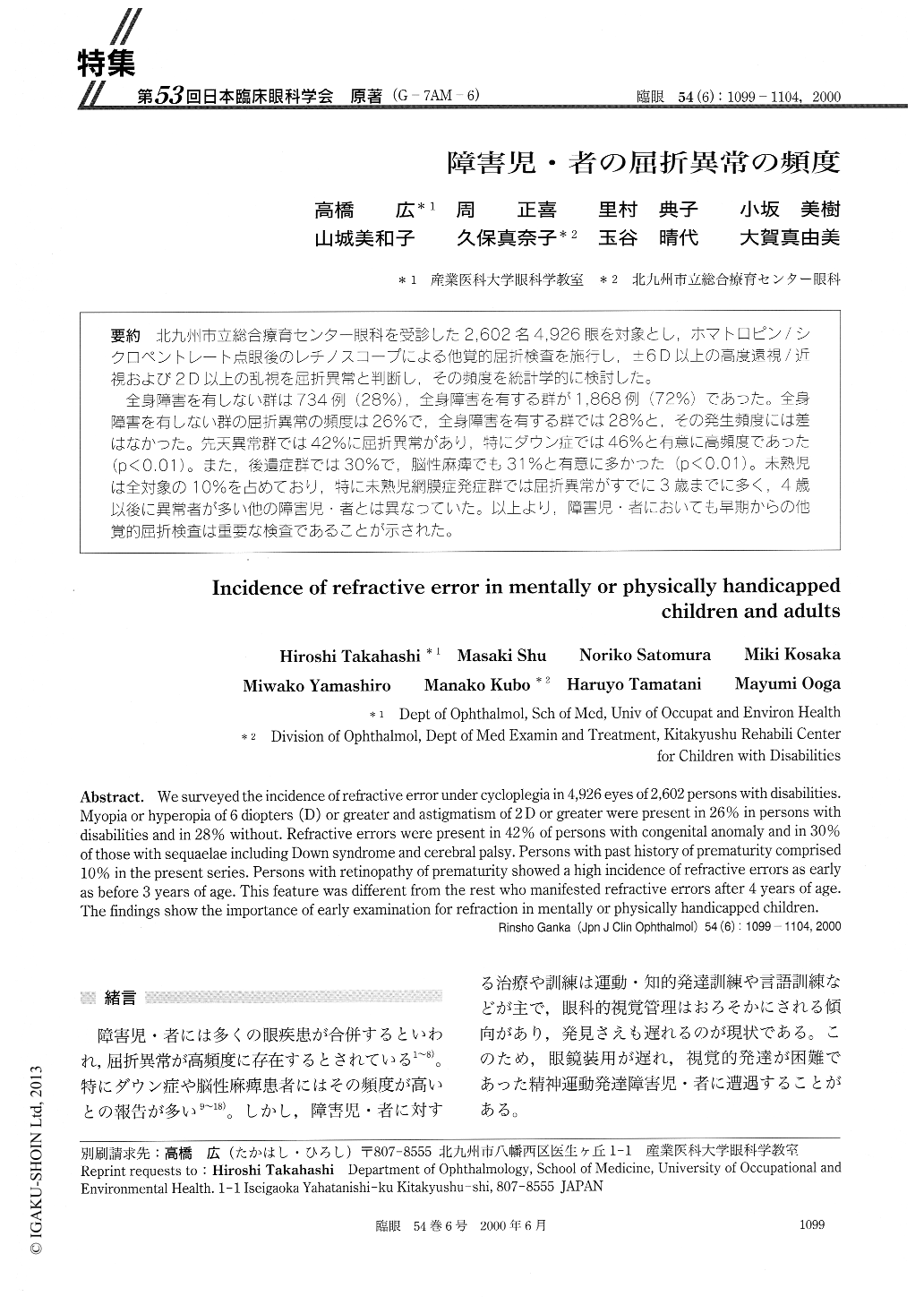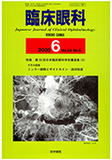Japanese
English
- 有料閲覧
- Abstract 文献概要
- 1ページ目 Look Inside
(G−7AM−6) 北九州市立総合療育センター眼科を受診した2,602名4,926眼を対象とし,ホマトロピン/シクロペントレート点眼後のレチノスコープによる他覚的屈折検査を施行し,±6D以上の高度遠視/近視および2D以上の乱視を屈折異常と判断し,その頻度を統計学的に検討した。
全身障害を有しない群は734例(28%),全身障害を有する群が1,868例(72%)であった。全身障害を有しない群の屈折異常の頻度は26%で,全身障害を有する群では28%と,その発生頻度には差はなかった。先天異常群では42%に屈折異常があり,特にダウン症では46%と有意に高頻度であった(p<0.01)。また,後遺症群では30%で,脳性麻痺でも31%と有意に多かった(p<0.01)。未熟児は全対象の10%を占めており,特に未熟児網膜症発症群では屈折異常がすでに3歳までに多く,4歳以後に異常者が多い他の障害児・者とは異なっていた。以上より,障害児・者においても早期からの他覚的屈折検査は重要な検査であることが示された。
We surveyed the incidence of refractive error under cycloplegia in 4,926 eyes of 2,602 persons with disabilities. Myopia or hyperopia of 6 diopters (D) or greater and astigmatism of 2 D or greater were present in 26% in persons with disabilities and in 28% without. Refractive errors were present in 42% of persons with congenital anomaly and in 30% of those with sequaelae including Down syndrome and cerebral palsy. Persons with past history of prematurity comprised 10% in the present series. Persons with retinopathy of prematurity showed a high incidence of refractive errors as early as before 3 years of age. This feature was different from the rest who manifested refractive errors after 4 years of age. The findings show the importance of early examination for refraction in mentally or physically handicapped children.

Copyright © 2000, Igaku-Shoin Ltd. All rights reserved.


